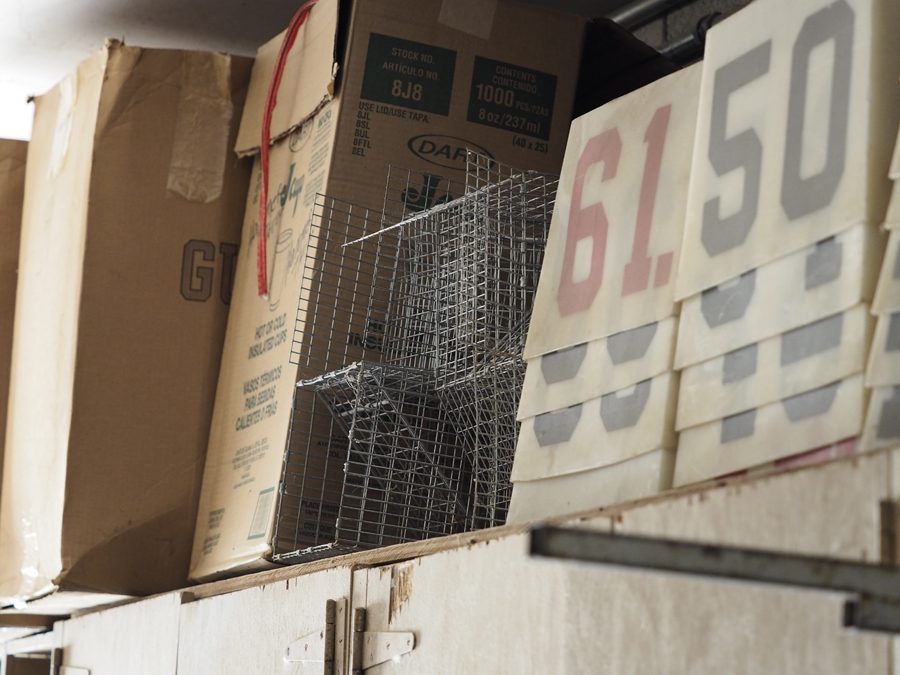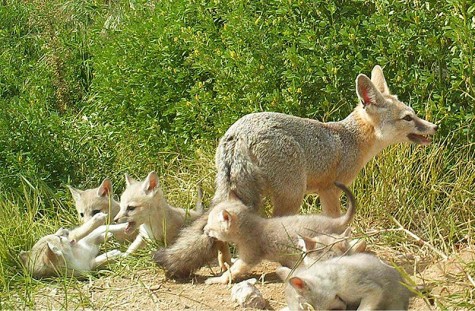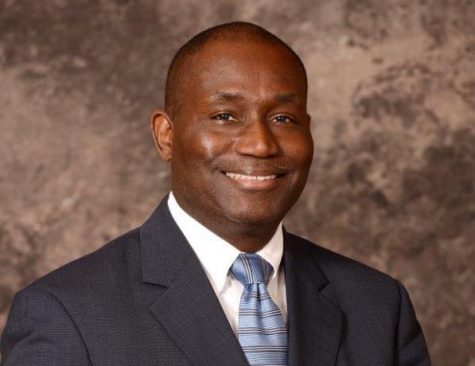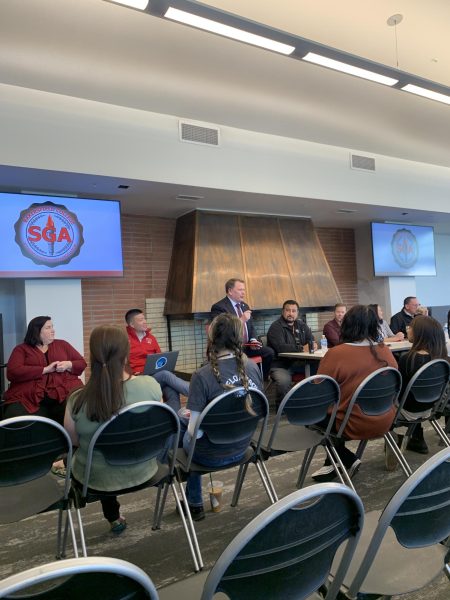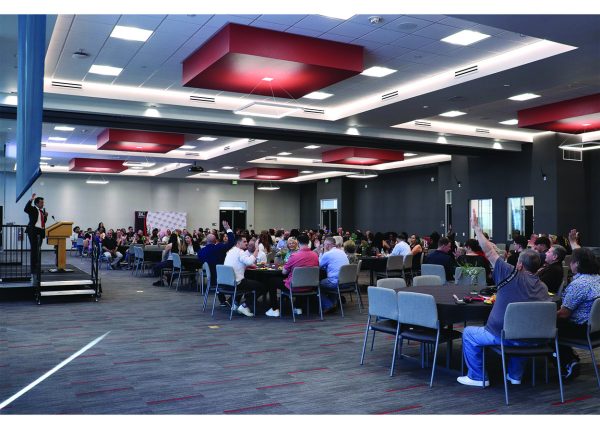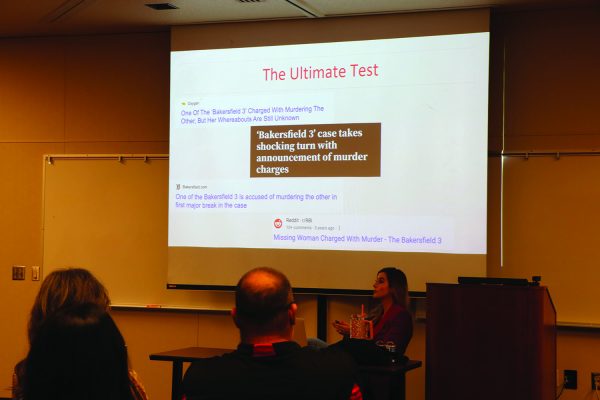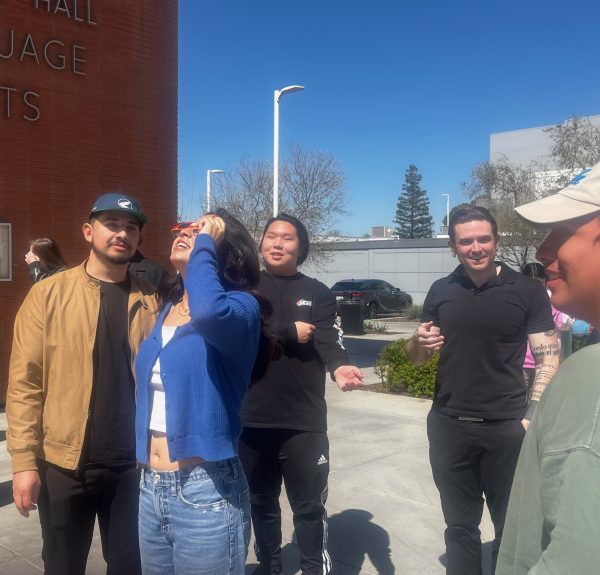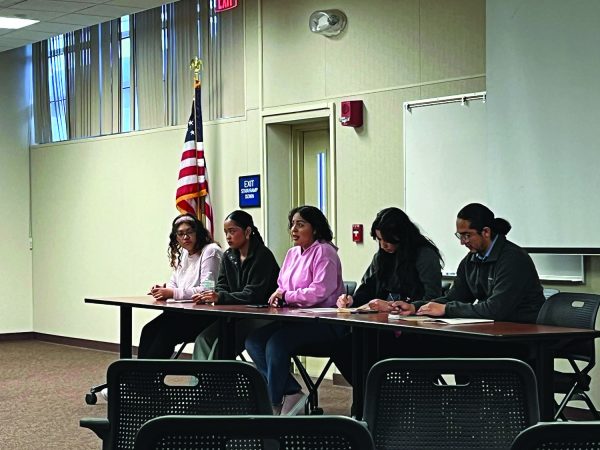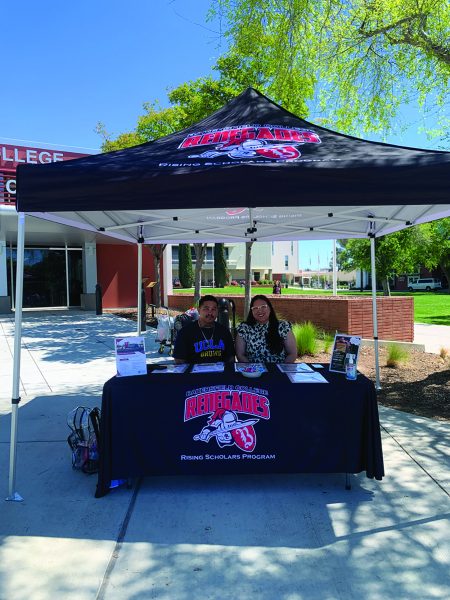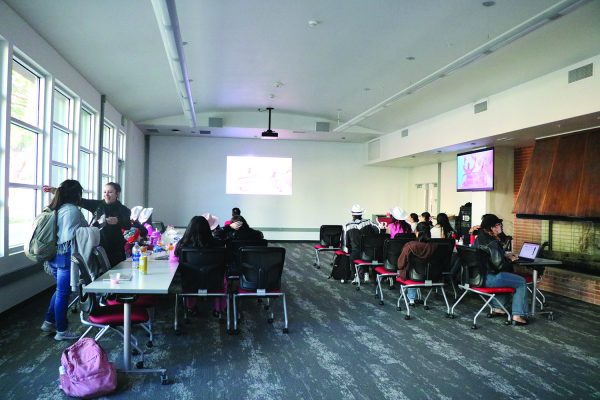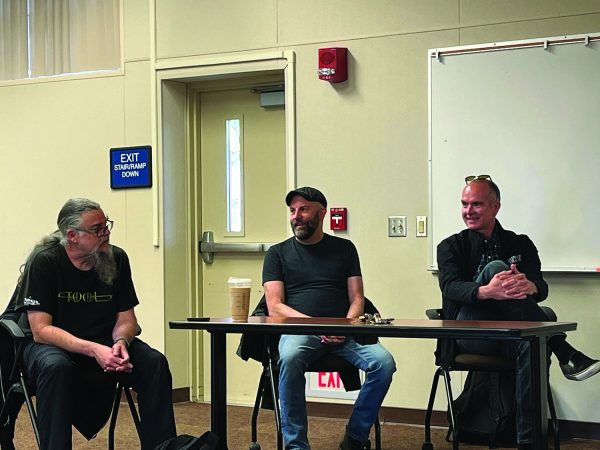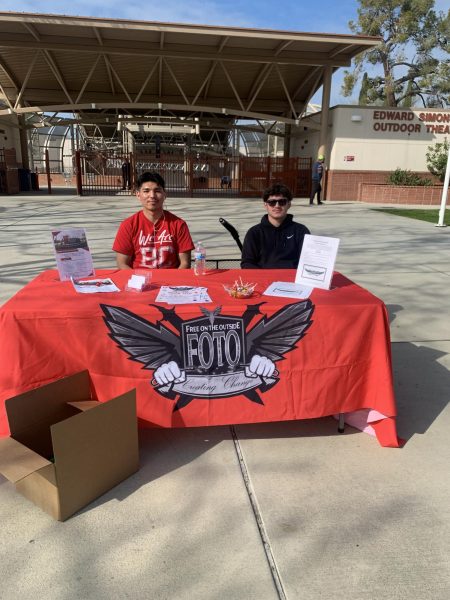Kit-fox probe begins
The Renegade Rip continues its investigation into Bakersfield College’s removal of kit foxes from Memorial Stadium.
California Department of Fish and Wildlife has launched an investigation into the removal practices that were employed by Bakersfield College Facilities, Maintenance and Operations staff against the San Joaquin kit foxes that reside in Memorial Stadium.
The investigation was initiated after The Renegade Rip published two stories April 6 about the treatment of the kit foxes.
Anne Ferranti, environmental program manager with the California Department of Fish and Wildlife, would not comment as to what initiated the investigation, nor would she provide the focus of the investigation.
Anthony Culpepper, vice president of finance and administrative services at Bakersfield College, denied any knowledge of a Fish and Wildlife investigation. “They didn’t share anything with me about an active investigation. We were not notified about any active investigation,” said Culpepper.
The Rip has been investigating the treatment of the kit foxes in Memorial Stadium since it was brought to the newspaper’s attention in March by sources who wished to remain anonymous. In doing so, The Rip interviewed Ed Davis, who is a major benefactor to Bakersfield College and current president of The Renegade Helmet Club.
Davis has been assisting Bakersfield College since 2014, when he was involved in the replacement and leveling of the playing surface at Memorial Stadium. “I’ve been working on the football field as an agronomist for the coach for years, trying to make it in as good of shape as I possibly can,” said Davis.
While working on that project, Davis stated he looked around and saw how terrible the rest of the stadium’s bowl looked. “All the weeds, all the dead bushes, on… and on,” he said.
So approximately three years ago, Davis started researching what the problem was, as a result, “The real problem is that because of the [politically correct] society/ideology that’s on campus here, no one wanted to disturb the kit foxes,” said Davis.
Davis stated he approached the college administration and received positive feedback.
“I was a forestry major in college, initially, and I understand a lot of this stuff,” said Davis. “I am also an agricultural pest control adviser state licensed by California for pest conrol. I am a licensed guy.”
Davis researched what could be done to the kit foxes for approximately one year because in addition to beautification of Memorial Stadium, he was worried about any liability that the school might face due to the kit foxes.
“Everybody knows what a 17-18-year-old kid is going to do if he has a kit fox cornered. He is going to try to grab it and that thing is going to eat on his arm like corn on the cob … somebody is going to run one of them little things over and who is going to pay the $30,000-$40,000 for killing a kit fox? Even if it was an accident, they are going to fine you,” said Davis.
Terry Palmisano, environmental program manager who supervises all of the Wildlife and Lands functions for the Central Region for California Department Fish and Wildlife, addressed Davis’ concern about liability issues with kit foxes.
She stated that “her legal staff would say wildlife are not instruments of the state. We cannot control them just like a bear coming out of the woods. Our agency is not responsible for what wildlife does, and I think the schools and other districts could make that argument.”
Further, she has worked at Fish and Wildlife for quite some time, and she couldn’t think of any incident where a kit fox has created an issue in the terms of a human-kit fox interaction.
Palmisano finished with, “Enjoy looking at it, but stay clear and don’t feed it.”
Davis stated he worked with state, federal and county wild animal control, and Craig Rouse (then manager of Facilities, Maintenance, and Operations at Bakersfield College) to get one-way traps, which he compared to a one-way door, which were put in front of the kit fox dens.
The traps were put in place for seven days “to make sure after pupping season that everyone is out and then you fill that den with cement which is exactly what we did. We moved every one of the kit foxes out of pupping season, out of the area, gone,” said Davis. “So we did it, the one-way door. We cemented the holes, followed the rules with the permission of the state, fed, and the county agencies.”
“They’ve gone to other places. They’ve gone to neighborhoods. You know they are scavengers; they can go anywhere. All they’re doing is eating trash,” stated Davis.
The removal of the kit foxes began in early 2015, as sources to The Rip observed equipment left out of place, such as a blue spray applied to vegetation on the hillside and kit fox dens being collapsed and cemented occurring in February.
Further, an additional source who was party to the removal of the kit foxes and who would only speak to The Rip if his/her name would not be released, helped shed light as to what occurred inside Memorial Stadium.
Facilities, Maintenance and Operations staff had meetings, in which Rouse, Davis and current Facilities, Maintenance and Operations manager Don Birdwell discussed different methods to remove the kit foxes from Memorial Stadium.
The overall atmosphere from administration down to staff was that of no compassion or concern toward the kit foxes, stated the source. Rouse even confirmed to staff that Culpepper was aware of and approved the project plans, the source said.
According to the source, the excluder traps that were placed on the dens were modified so that once a kit fox entered the trap it would not be able to exit. Staff was directed to check the traps two to three times per day during their work shift.
When staff questioned the actions being taken, Rouse and Birdwell would tell them that they were following the biologist recommendations. But the source never saw a biologist onsite while this was occurring.
The source stated that stadium complex manager Patrick Harrison was the person directed to cement in the dens. Harrison was told to come in after hours to complete his task. It was unknown if he acted alone, or if employees from Davis’ company assisted, as the source did not know of any other Bakersfield College staff being present.
The Rip has submitted a public records request to the Kern Community College District on April 18, 2016, and the requested Facilities, Maintenance and Operations work schedules and time cards, have not been made available.
Additionally, the source is aware of at least three dead kit foxes being located in or near Memorial Stadium. It is unknown where the carcasses were disposed.
The source is fearful that kit foxes were buried alive, as he/she is positive that no one took time to verify if the den was empty at the time they filled it with cement.
In July 2015, Rouse left his position at Bakersfield College and was hired by the Rocklin School District in Rocklin near Sacramento. According to Culpepper, Rouse left Bakersfield College due to a family-related issue, but it is known to The Rip that his wife is still employed by BC and his son still attends BC.
Numerous requests for interviews have been sent to Rouse and he has declined them all.
Following Rouse’s departure from Bakersfield College, Culpepper became directly involved overseeing Facilities, Maintenance and Operations, and remained direclty involved until August 2015. Birdwell was subsequently named to replace Rouse as manager.
On July 27, 2015, Culpepper submitted a report titled, “The Kit Fox: A Report on the Exclusion Plan for Kit Foxes in the Memorial Stadium Area at Bakersfield College,” to KCCD chancellor Sandra Serrano.
In the report, Culpepper states that BC staff are working closely with wildlife biologist Vicky Monroe, who not only provided an exclusion plan, but also monitored BC staff in setting up the excluder cages. The report makes no mention of the altering of the cages, nor the collapsing and cementing of the dens, that took place inside the stadium.
Additionally, when interviewed for this story on April 13, 2016, Culpepper specifically stated, “To my knowledge, I am not aware of any kit foxes being moved or forced off the hills. I am not aware of any complaints about the kit foxes from anyone.”
On July 27, 2016, executive vice president of BC, Nan Gomez-Heitzeberg, responded to an email from Bill Kelly, an agricultural teacher at BC. She was responding to his concerns about what is occurring to the kit fox dens in Memorial Stadium. Culpepper is mentioned to have already begun to investigate the situation and to identify the steps that have been taken to date.
On Aug. 10, 2015, Monroe who had been trying to reach Facilities, Maintenance and Operations staff, emailed the department, in which she clearly stated that no California Department Fish and Wildlife Clearance Report is pending or planned.
She stated that she has only been on campus twice; once in August 2014 and again in November 2014. She was shown several den sites, she provided species information and general co-existence/conflict/management information, and extended an invitation for future on-campus “Keep Me Wild” public meetings.
Monroe additionally recommended in her email that BC should hire an independent, qualified wildlife biologist before any project move forward.
On Sept. 3, 2015, chancellor Serrano emailed BC president Sonya Christian, directing “BC to refrain from taking or initiating any further actions regarding the kit foxes or kit fox dens until Mr. Burke and Mr. Hine agree that it is proper to go forward with those actions.”
This occurred at the time Davis and Birdwell were prepared to apply the mulch. “At the last minute, after we have permission from state, fed and county to do it, Sandra Serrano says don’t do that,” said Davis.
Davis said that in his first three years working on projects at BC, they tried to do everything through Serrano and couldn’t do anything.
Davis questioned Serrano’s motives for putting a halt to the project, stating that the mulch was all the right things for all the right reasons, but they still couldn’t proceed because of the kit foxes. Serrano’s position was “You will get in trouble with the kit foxes. No you won’t get in trouble because we already have permission from state, fed and county,” said Davis. Davis stated that even after knowing all the facts, Serrano still put a “cease and desist” on it, after he and Rouse did so much work on it.
Following the “cease and desist,” Davis stated “Why did we do all this? It took two years. We set up a tent up there at the north end right under that BC thing and had the county agent come out. We explained the whole thing to her at the end of the day. I am telling this gal, who is a really sharp gal … one of them kit foxes are going to eat one of these kids up or someone is going to kill one with their car.”
Davis refused to name the “county agent,” because she somehow got in trouble following the events that happened at BC.
“There was a cease and desist written and everybody from state, federal and county got in trouble. They all got in trouble for doing something that is common sense,” said Davis.
According to Tom Burke, chief financial officer of the KCCD, “(Serrano) had received an inquiry from a faculty/staff person about what was happening. That was the reason she did that, and in order to have legal counsel provide guidance (and) to verify BC was following regulatory protocols and requirements for what they were doing in Memorial Stadium.”
Burke later informed The Rip that the inquiry came in the form of an email. Burke spoke on behalf of district administration because Serrano was out of town.
On July 24, 2015, Waring Laurendine, an independent wildlife biologist from McCormick Biological Inc., conducted a survey of the hillsides in Memorial Stadium. This is the first biological survey that there is record of. Laurendine reports evidence of kit foxes in certain areas of the stadium, noted large rocks blocking several burrow entrances, and there was evidence of a den having been filled with concrete slurry.
Following this report, the mulch was left untouched in the student parking lot and no additional work appeared to be done on the hillside in Memorial Stadium. During this time, Davis stated he received notification from Culpepper, giving him assurance that his mulch was going to be placed.
On Oct. 9, 2015, Laurendine filed a second report with BC and requested BC forward that report to the California Department of Fish and Wildlife. Laurendine reported that he observed three active dens located around the BC logo on the hillside. He recommended a 100-foot buffer between mulch and the dens.
During winter break, December 2015, the mulch was applied to portions of the hillsides in Memorial Stadium. The 100-foot buffer appears to have been respected and there is still a large portion of mulch in the student parking lot.
According to sources within several departments at BC, following the publication of the April 6 stories, Culpepper directed all staff not to talk about the kit fox situation and to have all questions referred to him directly.
A source stated, “(Birdwell) had a closed-door meeting with all (Facilities, Maintenance, and Operations) staff, during which they were told that Culpepper would be making a statement regarding what happened with the kit foxes, and they were told (not) to say anything about what was going on.” Birdwell’s demeanor was characterized as intimidating.
During a follow-up interview with Culpepper on April 28, 2016, he stated, “I haven’t personally seen the cement out there. The information that I was told from you and others is that there was cement placed in one of the holes that were out there. That’s the only information I know.”
It was requested that Culpepper make Birdwell, Harrison, athletic director Sandi Taylor, and others available for interview, to which he responded, “I want to make sure that there is a singular source of information. It’s important, that you don’t get different information or confusing information.”
Culpepper stated that Rouse was the person from BC who spoke to and worked with Monroe, and that Rouse was the person in charge of the project up until he left BC. “When Craig left, I took responsibility for facilities. When you say project and you’re saying down to the minute issue of the kit foxes project, I shared with you already all that information and all that was true.”
BC president Christian and executive vice president Gomez-Heitzeberg acknowledged The Rip’s interview request. Christian referred The Rip to Culpepper, and upon a second request didn’t respond back to schedule an interview.
Gomez-Heitzeberg was out of town when an interview request was made, she acknowledged the interview request, but an interview wasn’t scheduled with her before the deadline for this story.
Harrison, Taylor, sports information director Francis Mayer, Birdwell and others all referred The Rip to Culpepper.


